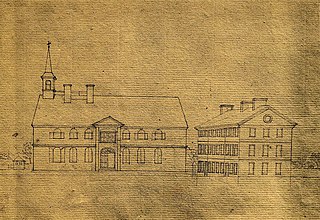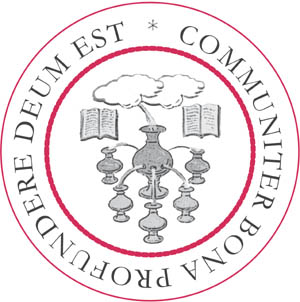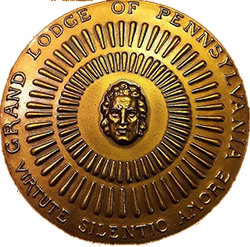Related Research Articles

Benjamin Banneker was an African-American naturalist, mathematician, astronomer and almanac author. A landowner, he also worked as a surveyor and farmer.

Benjamin Rush was an American revolutionary, a Founding Father of the United States and signatory to the U.S. Declaration of Independence, and a civic leader in Philadelphia, where he was a physician, politician, social reformer, humanitarian, educator, and the founder of Dickinson College. Rush was a Pennsylvania delegate to the Continental Congress. He later described his efforts in support of the American Revolution, saying: "He aimed right." He served as surgeon general of the Continental Army and became a professor of chemistry, medical theory, and clinical practice at the University of Pennsylvania.

The Academy and College of Philadelphia (1749-1791) was a boys' school and men's college in Philadelphia in the colonial-era Province of Pennsylvania.

The Library Company of Philadelphia (LCP) is a non-profit organization based on Locust Street in Center City Philadelphia. Founded as a library in 1731 by Benjamin Franklin, the Library Company of Philadelphia has accumulated one of the most significant collections of historically valuable manuscripts and printed material in the United States.

The Rosenbach is a Philadelphia museum and library located within two 19th-century townhouses. The historic houses contain the collections and treasures of Philip Rosenbach and his younger brother Dr. A. S. W. Rosenbach. The brothers owned the Rosenbach Company, which became the preeminent dealer of rare books, manuscripts and decorative arts during the first half of the 20th century. Dr. Rosenbach in particular was seminal in the rare book world, helping to build libraries such as the Widener Library at Harvard, The Huntington Library and the Folger Shakespeare Library. In 2013, the Rosenbach became a subsidiary of the Free Library of Philadelphia Foundation, but maintains its own board and operates independently of the public library system.

William White was the first and fourth Presiding Bishop of the Episcopal Church of the United States, the first bishop of the Diocese of Pennsylvania (1787–1836), and the second United States Senate Chaplain. He also served as the first and fourth President of the House of Deputies for the General Convention of the Episcopal Church.

The Grand Lodge of Pennsylvania, officially The Right Worshipful Grand Lodge of the Most Ancient and Honorable Fraternity of Free and Accepted Masons of Pennsylvania and Masonic Jurisdictions Thereunto Belonging, sometimes referred to as Freemasons of Pennsylvania is the premier masonic organization in the Commonwealth of Pennsylvania. The Grand Lodge claims to be the oldest in the United States, and the third oldest in the world after England and Ireland, having been originally established as the Provincial Grand Lodge of Pennsylvania in 1731. This claim is disputed by both the Grand Lodge of Massachusetts and the Grand Lodge of Virginia.

Pennsylvania was the site of many key events associated with the American Revolution and American Revolutionary War. The city of Philadelphia, then capital of the Thirteen Colonies and the largest city in the colonies, was a gathering place for the Founding Fathers who discussed, debated, developed, and ultimately implemented many of the acts, including signing the Declaration of Independence, that inspired and launched the revolution and the quest for independence from the British Empire.

The Episcopal Diocese of Bethlehem covers fourteen counties in Pennsylvania to the north and west of Philadelphia. The current bishop, the Rt. Rev. Kevin D. Nichols, was elected as Bishop on April 28, 2018, and consecrated on September 15, 2018. The cathedral is the Cathedral Church of the Nativity in Bethlehem. The pro-Cathedral is St. Stephen's Cathedral in Wilkes-Barre, Pennsylvania.

The Federal Detention Center, Philadelphia is a United States Federal prison in Center City, Philadelphia, Pennsylvania which mostly holds pretrial male and female inmates as well as inmates serving brief sentences or those that are being transported to another prison within the federal prison system. It is operated by the Federal Bureau of Prisons, a division of the United States Department of Justice.

Walnut Street Prison was a city jail and penitentiary house in Philadelphia, Pennsylvania, from 1790 to 1838. Legislation calling for establishment of the jail was passed in 1773 to relieve overcrowding in the High Street Jail; the first prisoners were admitted in 1776. It was located at Sixth and Walnut Streets, where it acquired its original name Walnut Street Jail.

Union Fire Company, sometimes called Franklin's Bucket Brigade, was a volunteer fire department formed in Philadelphia in 1736 with the assistance of Benjamin Franklin. It was the very first firefighting organization in Philadelphia, although it was followed within the year by establishment of the Fellowship Fire Company. The fire company was formed on 7 December 1736 after a series of publications in the Pennsylvania Gazette by Franklin and others pointing out the need for more effective handling of fires in Philadelphia and remained active until approximately 1820. Although modeled after the Mutual Fire Societies of Franklin's native Boston, the Union Fire Company protected all members of the community rather than only the members of the company.

Chief Justice John Marshall is a bronze sculpture of John Marshall, by American sculptor William Wetmore Story. It is located at the Supreme Court, 1 First Street, Washington, D.C., N.E.
The following is a timeline of the history of the city of Philadelphia, Pennsylvania.
Benjamin Loxley, also known as Benjamin Lockley was a Philadelphia carpenter-architect, master builder, investor and military leader in the American Colonial Period. He began his career by working as a carpenter-architect and renting out land outside the city. He then worked as a master builder and built various properties in the city. He invested in many schemes and was a member of the Carpenters' Company of the City and County of Philadelphia.
The following is a list of works about Philadelphia, Pennsylvania, U.S.
The University of Pennsylvania College of Arts & Sciences (CAS) is the oldest undergraduate college at the University of Pennsylvania, a private Ivy League university, situated on the university's main campus in University City, Philadelphia. The college traces its roots to the establishment of a secondary school known as Unnamed Charity School in 1740. In 1749, Benjamin Franklin and twenty-one leading citizens of Philadelphia officially founded a secondary school named Academy of Philadelphia. In 1755, the secondary school was expanded to include a collegiate division known as College of Philadelphia. The secondary and collegiate institutions were known collectively as The academy and College of Philadelphia. The college received its charter from Thomas Penn and Richard Penn. Penn CAS is the oldest institution of higher learning in the state of Pennsylvania and the sixth-oldest chartered college in the United States.

Bibliography of early American publishers and printers is a selection of books, journals and other publications devoted to these topics covering their careers and other activities before, during and just after the American Revolution. Various works that are not primarily devoted to those topics, but whose content devotes itself to them in significant measure, are sometimes included here also. Works about Benjamin Franklin, a famous printer and publisher, among other things, are too numerous to list in this bibliography, can be found at Bibliography of Benjamin Franklin, and are generally not included here unless they are greatly devoted to Franklin's printing career. Single accounts of printers and publishers that occur in encyclopedia articles are neither included here.

Franklin Bache was an American physician, chemist, professor and writer from Pennsylvania. He taught chemistry at West Point Academy, the Franklin Institute, Philadelphia College of Pharmacy and Jefferson Medical College. He published several scientific textbooks including a pharmacopoeia with Dr. George B. Wood in 1830 that became the basis of the U.S. Pharmacopoeia and U.S. Dispensatory. He was the first American to perform original research on the study of acupuncture for the treatment of pain.

This is a comprehensive list of primary and secondary works by or about Benjamin Franklin, one of the principal Founding Fathers of the United States. Works about Franklin have been consistently published during and after Franklin's life, spanning four centuries, and continue to appear in present-day publications. Scholarly works that are not necessarily subject-specific to Franklin, yet cover his life and efforts in significant measure, may also be included here. In contrast, this bibliography does not include the numerous encyclopedia articles and short essays about Franklin..
References
- 1 2 "The Philadelphia Society for Alleviating the Miseries of Public Prisons". The Library Company of Philadelphia . World Digital Library . Retrieved 4 January 2014.
- ↑ "Pennsylvania Prison Society", Pennsylvania Historical Society, 2006
- ↑ "The Pennsylvania Prison Society" . Retrieved 2009-04-10.[ dead link ]
- ↑ "Advocating for the just and humane treatment of prisoners". The Pennsylvania Prison Society.